No matter how many bright and spectacular ornamental plants were on your household plot, it will be incomplete without coniferous cultures, which are considered to be the queens of the garden and are always included with designers in garden compositions and decorative groups. In service with gardeners, there is a wide variety of coniferous plants, characterized by the characteristics of the appearance and the peculiarities of growing. In addition to all well-known firings and pines, more exotic cultures are especially popular, such as Tui and cypress.
The last type of coniferous culture sometimes causes fear of gardeners who are afraid to take for the cultivation of such cooler-loving crops. Cypress Lavson Columnaris is a bright representative of this species, which against the background of other varieties has resistant to growing conditions and climate, besides, it can boast a spectacular appearance.
In this article, we consider the features and characteristics of the cypressian of the glaucoma Columnaris, as well as the options for using it in the decoration of the garden plot. We note important techniques of agrotechnics of growing and the rule of landing and care for the cypressovik of this variety.
Features and Morphological Description Kiparisovka Columnaris
Lavson Columnaris Cypress is a coniferous evergreen plant, which belongs to the family of cypress and among the other cultural varieties is considered the most popular. All varieties of Lavson's cypressovka, including the variety of Columnaris, were loved by gardeners for their highly decorative appearance and relative cold resistance and unpretentiousness in care, which is especially important in Russia.
Motherland and most growing wild species cypress on well-known data is consideredthe territory of North America and East Asia, but in recent years it is increasingly possible to meet individual specimens and in Europe. Cypress variety Columnaris appeared in about the 18th century. And since 1854, this evergreen coniferous plant spread widely throughout the northern hemisphere.
Description Kiparisovka Columnaris:
- Kiparisovik Columnaris or ChamaecyParis Lawsoniana Columnaris is a very beautiful, spectacular and decorative plant from the entire diversity of coniferous crops, which has received great recognition in the horticultural world and is often used for landscaping by the household plot and city parks, as well as the well-known Thuja. This cypressive variety, thanks to the excellent characteristics of endurance and unpretentiousness, is considered an optimal option for landing in Russia, with the exception of the northern regions, in comparison with other varieties of this culture.
- Plant Cypress Lavson Columnaris - this is wood, that v nature can grow to7-8 meters. But when cultivating culture in the garden, the height of this tree will not be so significant. The cypressive is characterized by a fairly fast growth rate, for the year it can grow about 15-20 cm, which allows it to reach it for 10 years of height of 3-4 meters.
- The root system of coniferous wood is represented by strong and abundantly branched roots, which are mostly apparent.
- In its appearance, the Kiparisovik Columnaris is a very decorative plant, which is achieved by a narrow colonum and proper form of the crown, which becomes better and denser with age.
- The crown is formed by dense and short branches, which are directed vertically up and begin to branch up with the earth itself. At the same time, the sprigs are located very thickly, which allows the plant to keep the shape of the crown.
- Skeletal kiparisovka shorts are short, only 10 cm. Covered brownish-brown thin bark.
- Throughout the year, the decorativeness of this plant is the needle of a grayish blue shade.
- The needle of Kiparisovka Columnaris evergreen, scaly, widely placed and tightly pressed to the shoots. In winter, the shade of leaves becomes more grayish than blue.
- The needles of this plant exudes a pleasant fragrance and feel very soft and pleasant to the touch.
- Due to the large number of twigs, in diameter, the plant can grow to 2 meters, which allows the variety to get the living ingreders.
- Lavson Columnaris Cypressik is one of the most frost-resistant varieties among all kinds of cypressive, so it is often used in the middle lane of Russia. The zone of frost resistance of this variety 5B, which corresponds to the indicators in minus 25-29 degrees of frost. In more northern regions, for example, in Siberia, growing cypressive Columnaris is quite difficult, the plant can freeze and die.
Using Cypress Columnaris in Landscape Design
Like all coniferous plants, Columnaris Cypress is considered a very decorative plant, which is actively used by gardeners and landscape designers for landscaping and decorating their gardens and gardens. Today there is simply a huge number of options for using this plant in a variety of compositions that benefit the originality of your land. Consider the main ways to use Lavson Columnaris cypressov in the garden design.
- The cypressian of this variety looks very beautifully in solitary plantings against the background of a green lawn. Thanks to the beautiful and compact crown form, this tree does not need neighbors to decorate the plot.
- In addition to this, the saplress of cypressive Columnaris can be safely planted in bulk garden containers and pots. Thus, it is possible to easily and quickly move the trees along the site, creating several garden compositions at the same time.
- The coniferous plants of this variety in group compositions seek effectively. For example, you can plant three seedlings of Cyparisovka Columnaris.
- Also, many gardeners prefer to plant whole compositions from a wide variety of coniferous plants: cypresses, tui, fir trees and pines.
- Decorative shrubs and trees can also be placed on coniferous plants, which are located around the tall trees of Calombian cypress.
- Especially often, gardeners use this variety of cypresses to create thick and smooth alive elevations for separating the site or to create the borders of the subsidence.
- In recent years, the Cypress Lavson Columnaris is often planted within the city in various park areas, as this plant is resistant to air pollution.
As can be seen, the cypressive is a very popular plant, which has long been loved by gardeners and is often used to landscap in areas. Below are the photo of Lavson Columnaris cypressovka in various use options.
Column breeding Columnaris: the most common ways
Columnaris variety cypressive cultivation - the process is quite understandable and simple, which includes all the well-known actions and manipulations. To obtain a qualitative result in the first place it is necessary to correctly and competently select a method for breeding culture. Lavson's cypressovik Columnaris can be multiplied by several ways: seeds, tanks and cuttings. Each option is distinguished by its features that need to be considered to obtain a full-fledged healthy seedling of a coniferous plant. Next, we note the main features and rules for the use of breeding methods.
Seed breeding of cypressovka Columnaris
- This method of breeding plants is most often used to reproduce species cypressov. However, with a great desire, you can try to multiply the seeds and the cypressian of the Columnaris variety. In this case, you need to be prepared for the fact that maternal signs of young plants may not inherit.
- You need to start with the acquisition of high-quality seeds of Kiparisovka Columnaris or collect them on their own from an adult plant. For this, it is necessary to wait for the full ripening of small cones on the branches, which occurs in about the beginning of autumn, after which they are collected and thoroughly dried in a ventilated room. In the future, such seeds do not lose their germination for 15 years.
- So that the seeds later gave friendly shoots, they must be hardening or stratified. To do this, place high-quality seeds into a container with a substrate and scream in the snow. You can also place a refrigerator container until spring. At the same time, the soil is better used light and loose, consisting of sand and peat.
- At about the end of February or in the first numbers of March, the container with seeds should be moved to a warm room with a temperature of 18-23 degrees, where they will sprout very quickly. However, you need to adhere to the rules: illuminated place and protection against sunlight.
- Further departure will require you regular and moderate irrigation. And after the seedlings are growing a little and fixes, they must be divened.
- When warm weather is installed on the street, containers can be started to endow outdoor air for hardening.
- After that, prepare a small bed in the garden with a loose and nutritious substrate with sufficient moisture in a shady location, where the seedlings of Calumnaris cypressov are planted as a result. At this place, young trees will be winter until they are completely fixed.
Columnaris of Cypress California
- Such reproduction for this culture is considered the most efficient and frequently usedSo it allows you to get a lot of small seedlings at the same time.
- Conducting cutting with cuttings in spring immediately after full heating of soil and air.
- At the beginning, each gardener must take care of cutting cuttings from sideescapes from their top part about 5-15 cm long.
- Next prepare the planting material for rooting. It is necessary from the bottom of the cuttings to remove the housing after what all obtained the twigs are recommended for a couple of hours to lower into a container with a special solution of the root of the feeder.
- During this time, prepare suitable containers with soil mixture, which should consist of sand and perlite with the addition of chopped fir or pine crust.
- The cuttings rooted at a short distance from each other and above are covered with a film or glass to maintain the desired temperature and humidity.
- With a big humidity of the cylinder cutter, the Columnaris is rooted by about 1-2 months.
- It is possible to root the cuttings directly to the prepared bed, it is pre-closed with a plastic bottle from above.
- Fine seedlings can be winter in the ground, but they need to be covered.
Calombian breeding Columnaris
- In addition to the drawing, there is another variant of the breeding of this decorative plant - reproduction with gag. This method is considered to be the easiest and easy, so many gardeners choose it.
- Use such a method of breeding for cypressovka Columnaris is quite problematic, since the plant is tall and dangle to the surface of the Earth the gods are difficult. It is possible to do it only in a young plant, when the branches are not so much pressed against the trunk.
Planting Cypress Columnaris - a detailed description of the main stages of the process
Lavson Columnaris Cypress Landing - the process is simple and understandable and not much different from agricultural equipment of growing other conifers, such as spruce or thuja. The most important thing in this process is to properly hold a preparatory stage, which ultimately will depend on the further growth and development of a young plant.
Stage 1. Choose and purchase of the Kiparisovka Columnaris planting material
- First of all, each gardener must necessarily think about buying suitable, and the main thing about the healthy seedlings of Kolumnari cypress.
- To buy Cypress Columnaris, anyone can in a specialized garden center or a nursery, where various plants are grown for sale. Here you can buy not only seedlings, but also to get professional advice on cultural cultivation.
- Also, many experienced crops advise to acquire zoned seedlings, which have already passed the climate adaptation in your area of \u200b\u200bresidence. Thanks to this young plants, it will be much easier to adapt to the garden.
- It is also best to buy small seedlings in containers 3 and 5 liters, since larger plants are more difficult to carry a transplant and may die.
- Before making a purchase, it is important to carefully check the top of the seedlings. There should be no damage, broken branches and signs of diseases, yellow spots. The soil in the container must be clean and moistened.
Stage 2. Choosing a Playing Place of Cypress Columnaris and Soil Preparation
- Further important step is a choice on your garden plot of the most acceptable plants for this plant.
- Cypress Lavson Columnaris prefers to grow on sites with a large number of sunlight throughout the day, where all his decorative qualities are fully revealed. However, without any problems there will be a plant to feel in a small shadow.
- It is recommended to plant seedlings on a small hill so that the moisture is not accumulated from the roots.
- The cypressian of this variety does not differ in demand for the composition and type of soil. It can feel great in sandy or loamy soil. The main thing is that the soil is fresh and loose, well drained and nutritious.
- Suitable soil as an acidic reaction and weakly alkaline.
- The preparation of the soil to landing will be in the dumping of the site, adding humus and good looser of the upper layer.
Stage 3. Factory Plant Kiparisovka Columnaris
- The cypressian of this variety in open soil must be planted only in the spring, so that the young plant to have to root and grasp the onset of cold.
- At the selected place, it is necessary to prepare landing holes, the volume of which will depend on the root seedlings system. The sizes of the pits should be as follows: 80 cm deep and 60 cm wide. When planting a group of plants between them, you need to leave at least 1 meter, since the roots of the cypressive are growing horizontally. Poams are best prepared in autumn.
- Next, the pits need to spill with water, and to pour a layer of drainage to the bottom, which will not allow to accumulate in the roots of the plant. For a good drainage, a broken brick, small stones, gravel.
- After that, the pits partially fill the soil consisting of a turf, humoring, peat and sand.
- In the spring before planting abundantly span the pit with water. The same needs to be done with seedlings.
- Next, carefully place the seedlings into the center of the landing pit and gradually fallinate it with soil in such a way that after watering and plugging the soil, the root neck was on the same level with the surface of the soil.
- After landing, you will inspire the rolling circle.
Agrotechnical cultivation of cypressovka Columnaris: Secrets and nuances of care
Care for cypressive Columnaris is not difficult. From the gardener only it will be necessary to periodically devote their attention to the coniferous culture and perform the simplest action.
- Watering. The cypressian of this variety is considered a moisture-loving plant that needs a regular weekly watering in the amount of 10 liters of water per plant. In the hot season, it is recommended to increase the amount of irrigation - each tree will have to moisturize 2-3 times a week. This plant also reacts well to spraying.
- Loosening and mulching. It is also important after each watering gently loosen the top layer of the soil. If you periodically change the layer of mulch, then many procedures will have to do much less frequently.
- Feeding. Adult plants must be pumped 2 times a month with complex mineral fertilizers for coniferous plants until July, then fertilizer is stopped.
- Trimming. Each spring must necessarily carry out the sanitary trimming of the plant, removing all damaged branches. In addition, it is recommended to make forming trimming when the maximum 1/3 of the escape is removed.
- Preparation of Loveson Columnaris Cypress for Winter. For the winter cypressoviki, it is recommended to cover and shade from sunlight of burlap. In order not to worry about the preservation of plants, they are planted in public and enter the winter.
Kiparisovik Columnaris is a bright representative of the species, which will become an excellent decoration of the site and will fit well into any garden composition. At the same time, planting and culture care will not require great effort, and the plant itself will delight its appearance.

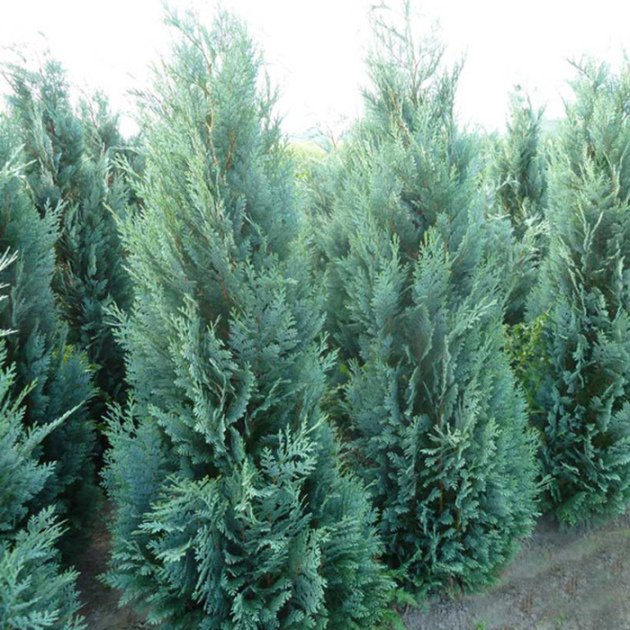
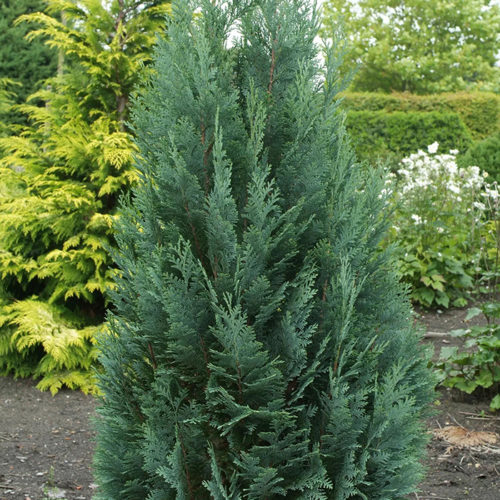
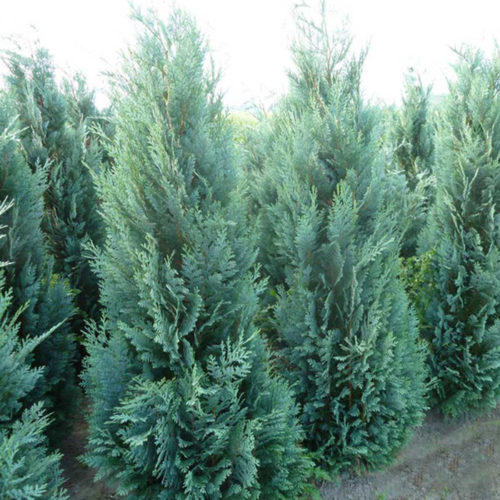
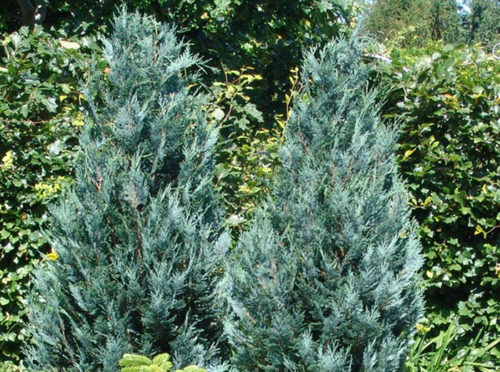
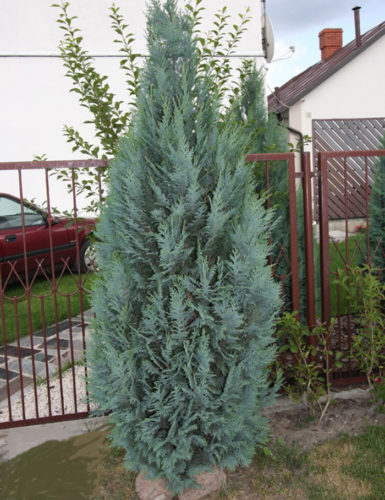
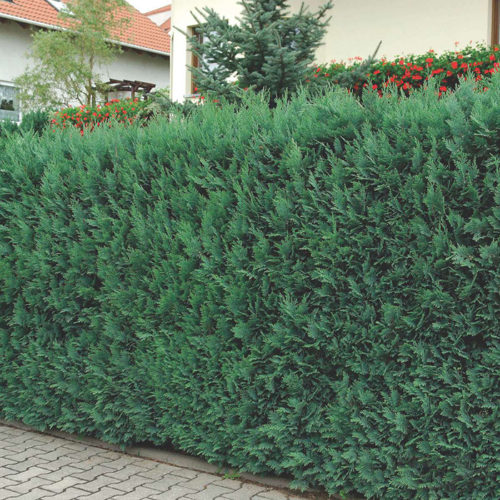
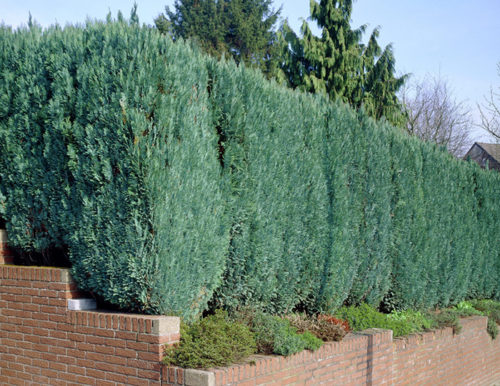
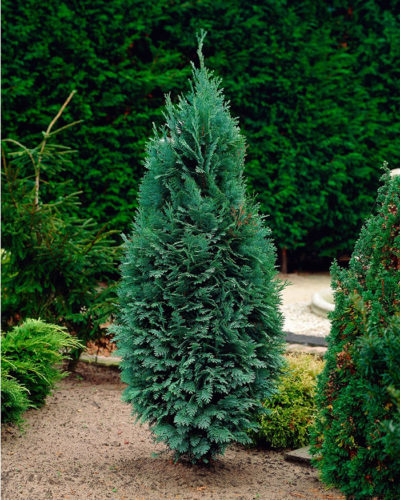
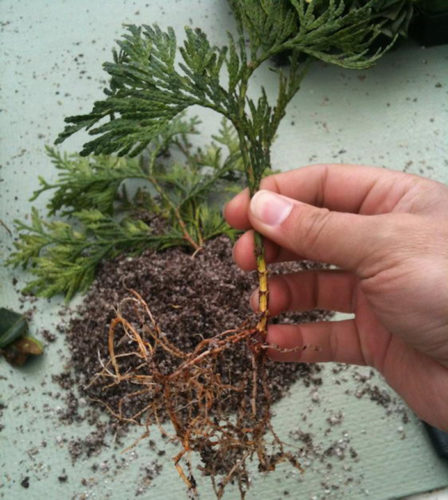
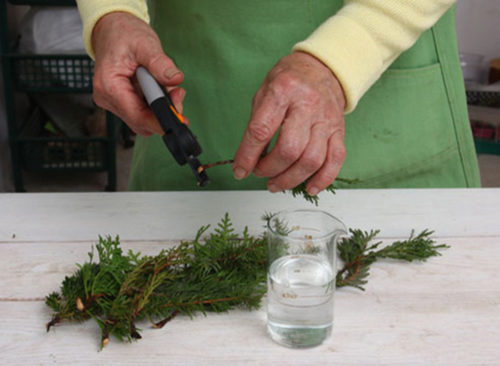
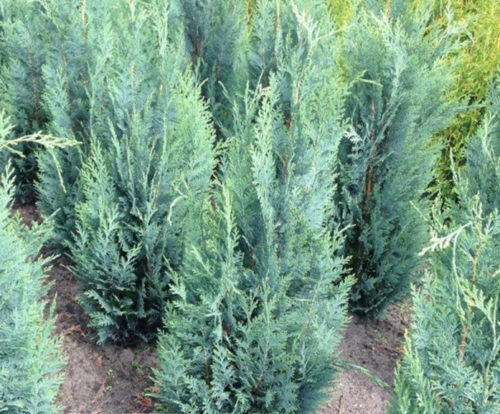
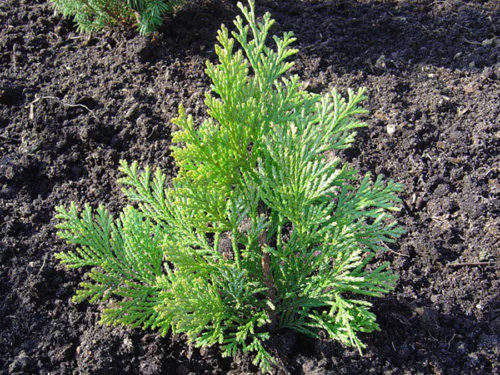
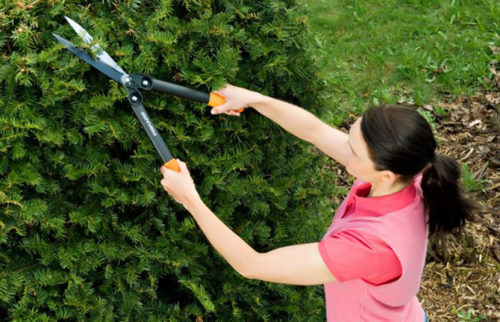












 Start a discussion ...
Start a discussion ...